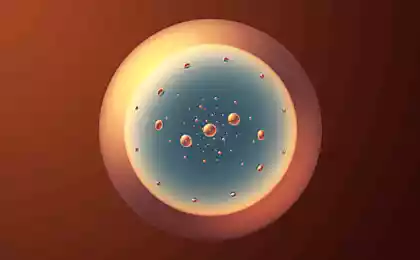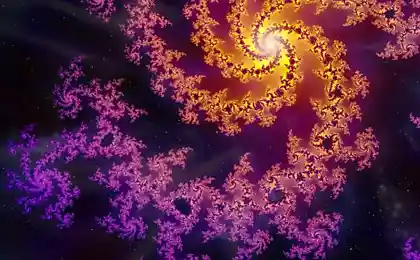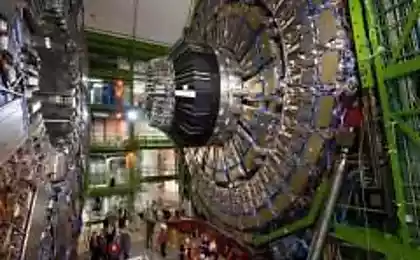439
Borexino recorded solar proton-proton neutrinos
An underground neutrino detector recorded particle produced in the fusion process of two protons in the nucleus of the Sun. Deep in its core, pairs of protons fuse to form heavier atoms, giving off mysterious particles called neutrinos in the process. These reactions are believed, should be the first step in the chain, which is responsible for 99 percent of the energy radiated by the Sun, but until now, scientists had no evidence. Physicists have captured the elusive neutrinos produced in the main reaction of synthesis of proton in the Sun.
The land must sink under such neutrinos. The calculation shows that 420 billion particles per second pass through every square inch of our planet, nevertheless they are simply impossible to find. Neutrinos almost never interact with ordinary matter, flying through empty space between the atoms in our bodies and normal matter. But sometimes they collide with an atom and knock an electron, creating a quick flash of light, visible to the sensitive detectors.
That is exactly what was discovered neutrinos in the Borexino experiment, the National laboratory of Gran Sasso in Italy. This discovery of the so-called proton-proton neutrinos, formed in the process of merging two protons in the Sun.
"Their existence no doubt, but a small group is difficult to build a sensitive detector that can detect low-energy neutrinos in real time," says wick Haxton, a physicist at the University of California, Berkeley, not involved in the experiment. — Borexino did this in the course of a long campaign for the study and elimination of background events".
Borexino uses a VAT of liquid scintillator — a material that emits light when excited. It is located in a large sphere around which 1,000 tons of water, buried 1.4 kilometers underground. This protection should stop everything except neutrinos, including background radiation that can mimic the desired signal.
"Unfortunately, for the proton-proton neutrinos, this is not enough," says Andrea Pocar of the University of Massachusetts, a member of the Borexino collaboration and lead author of an article published on August 28 in the journal Nature.
Some background pollution impossible to escape, because they are produced directly inside the experiment. The main noise creates carbon-14 in the scintillator. Carbon-14 is a radioactive isotope abundant on Earth. It predictable time decay helps the archaeologists to determine the age of ancient samples. When carbon-14 decays it emits an electron, creating a flash, very similar to pp-neutrinos. Physics must distinguish between the decay of the isotope from the neutrinos. The Borexino team was able to isolate all the signals for a few years, and she came across the true neutrino signal.
The opening of the solar pp-neutrinos will be an encouraging confirmation of the main theoretical models of the physics describing the Sun. Previous experiments have detected high-energy neutrinos, created in the later stages of the synthesis process involving the disintegration of boron atoms. But pp-neutrinos with lower energy to be detected was extremely difficult. Their discovery completes the circuit pattern of synthesis of the Sun, and reinforces the plans of the next generation ground-based experiments related to neutrinos.
The special mystery of these particles adds to the fact that they come in three versions — the electron-, muon - and Tau-neutrinos — and have the freakish ability to change shape, or "oscillating". All the solar neutrinos should be born in the form of electron-neutrinos. But by the time they reach Land, a small part of them is already turning into muon and Tau neutrinos.
Each flavor of neutrino has a different mass, although physicists do not know what it is, this weight. Mass determination and order three flavors — the most important purpose of the experiments with neutrinos. The differences between the masses of the various flavors of neutrinos is the main factor that determines how neutrinos oscillate.
If a neutrino passes through matter, interaction with it also changes the level of oscillations. Oscillations of high energy neutrinos turned out to be much change of matter, respectively, only a few of them survive as electron neutrinos by the Earth.
The neutrino Observatory in Sudbury, Ontario and Japanese experiment Super-Kamiokande discovered this phenomenon decades ago, marking the collapse of the high-energy solar boron neutrinos. The results of the Borexino experiment confirms the effect: most of the low-energy neutrino retains the flavor more often than high-energy.
New experiments, such as the "neutrino experiment with long base" (LBNE) from the National accelerator laboratory Fermi planned for 2022. They will study the oscillations of neutrinos passing through matter. Instead of using solar neutrinos, this project will generate powerful beams of neutrinos in particle accelerators and to study their behavior as it passes through matter.
The solution to the puzzle of neutrino mass, in turn, could indicate some deeper theory of particle physics, deeper than the Standard model which does not account for neutrino masses. The success of Borexino show that in our disposal, there are quite powerful detectors that can catch and analyze neutrinos.
Источник:hi-news.ru
Source: /users/1617























